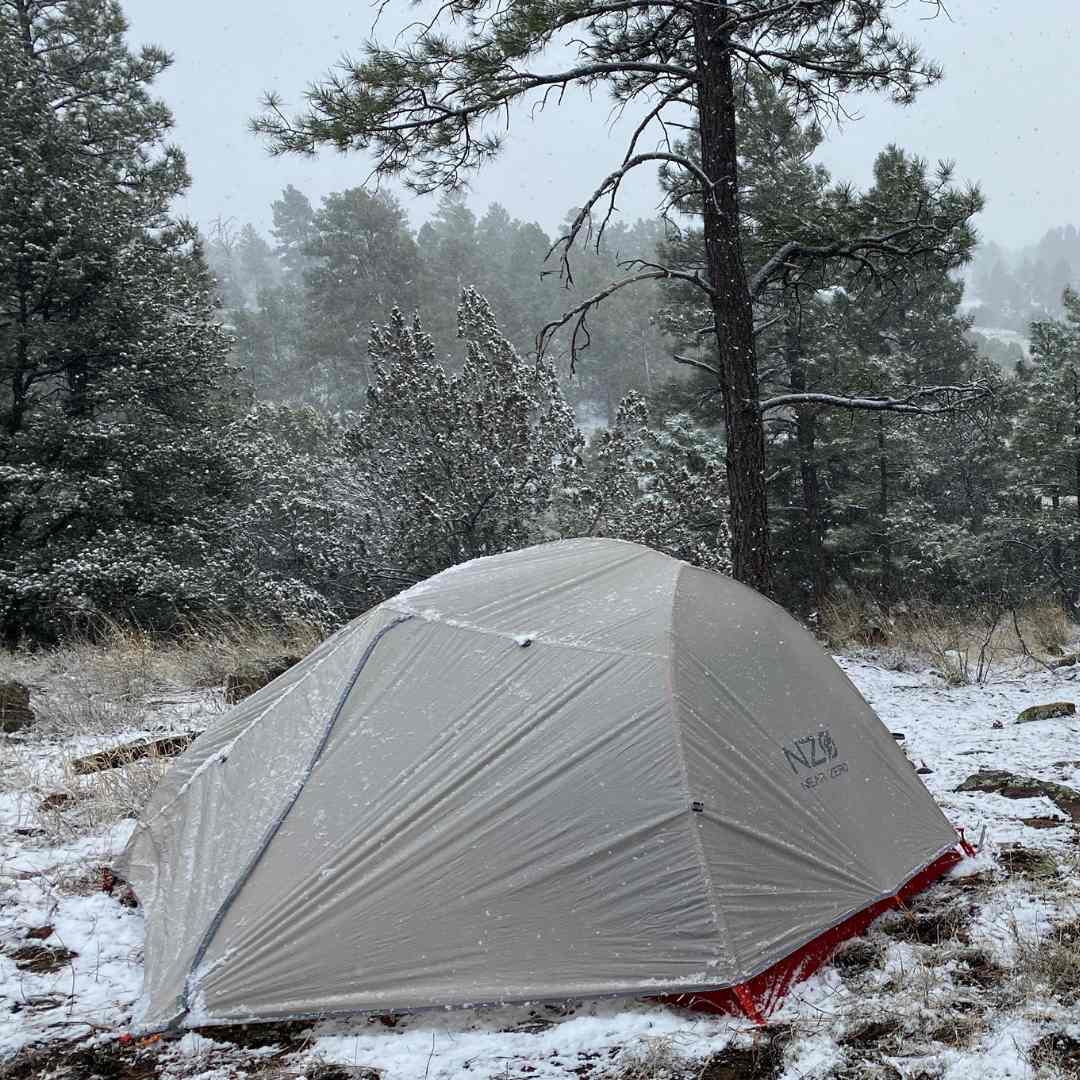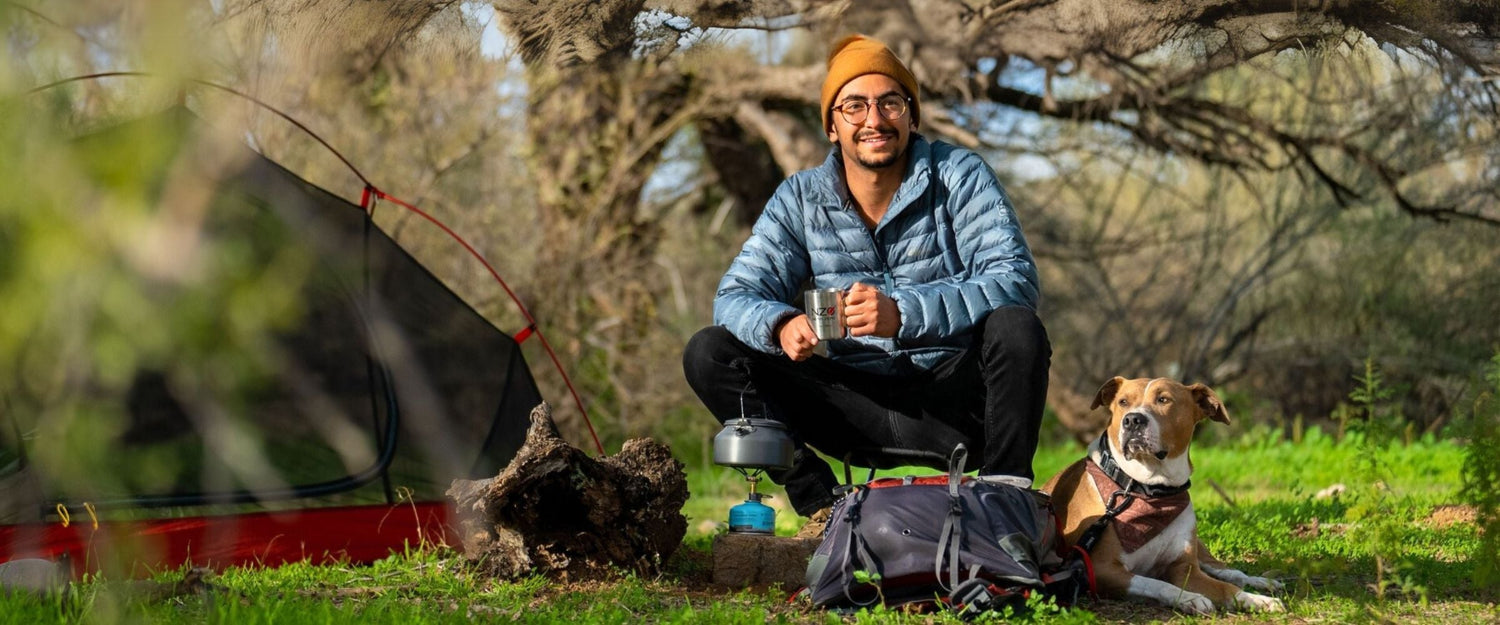
Creating a Cozy Shelter, Perfect for Winter Camping
Winter camping can be an unforgettable experience, but it can quickly become a freezing nightmare without the right tent. If you're planning a cold-weather adventure, you need a tent and outdoor gear that will keep you warm, dry, and protected from the elements. So, if you're experiencing snow in your neck of the woods and craving the great outdoors, we've got some great tips for you!
Choose the Right Tent
Before making modifications, start with a tent designed for winter conditions. Look for a four-season tent made with strong poles, durable fabric, and minimal mesh to retain heat. Dome-shaped tents are best because they shed snow quickly and resist strong winds.
Key Features to Look For:
-
Double-wall construction (inner tent + outer rainfly)
-
Strong aluminum or carbon fiber poles
-
Reinforced seams and waterproof coating
-
Good ventilation to reduce condensation
Insulate the Floor
The ground can quickly drain body heat, so it's crucial to add insulation beneath your sleeping area. Near Zero's FootPrints are a perfect tool for this.
How to Insulate the Tent Floor:
-
Use a ground tarp: Place a waterproof tarp under your tent to prevent moisture from seeping in.
-
Lay down foam pads or insulated mats: Closed-cell foam mats provide excellent insulation.
-
Add a thermal blanket or reflective layer: Emergency blankets or Reflectix can help trap heat.
Improve the Tent's Insulation
Adding insulation to your tent can significantly increase warmth.
-
Use a tent liner: Some tents come with optional liners that add a layer of insulation.
-
Hang thermal blankets: Attach emergency blankets or insulated fabric to the inside walls using clips.
-
Pack snow around the base: If camping in deep snow, pack it around the tent to block wind and add insulation.
Reduce Condensation with Proper Ventilation
While keeping warm is important, too much moisture can make you feel colder. Condensation occurs when warm air from your body meets cold tent walls.
How to Prevent Condensation:
-
Keep vents open: Even in freezing temperatures, proper airflow is necessary.
-
Position your tent wisely: Avoid low-lying areas where cold air settles.
-
Use a moisture-absorbing cloth: Keep a small towel handy to wipe down condensation.
Heat the Inside (Safely!)
While open flames cannot be used in a tent, there are safe ways to generate extra warmth. We can't emphasize this enough—DO NOT BUILD A FIRE IN YOUR TENT!
-
Use a hot water bottle: Fill a Nalgene bottle with hot water and place it in your sleeping bag.
-
Bring a portable heater: Battery-operated or catalytic propane heaters (like the Mr. Heater Buddy) are safe options.
-
Wear insulated layers: Don't rely on just your tent—wear warm base layers, a hat, and thick socks.
Choose the Right Sleeping Gear
Your sleeping bag and pad are just as important as your tent. The ZERO Mummy Sleeping Bag traps body heat below 14 F/ -10 C for comfort. It's water resistant and filled with high-quality white duck down, providing industry-leading fill power for an exceptional warmth-to-weight ratio. The NZ 20 Sleeping Bag is also another great option for temperatures at 18°F (-8°C). Our Feather Insulated Sleeping Pad has an R-value 3.7: Perfect for year-round use, offering warmth and insulation in most conditions. Its dual-plated aluminum insulation and an internal woven fabric layer for added warmth and noise reduction.
-
Use a cold-rated sleeping bag: Look for one rated at least 10°F lower than the expected temperature.
-
Layer with a sleeping bag liner: This can add up to 15°F of extra warmth.
-
Elevate your sleeping area: Keeping your sleeping pad off the direct ground (like on a cot) reduces heat loss.
Our Final Tips for Staying Warm in Your Tent
Eat a hot meal before bed – Your body generates heat as it digests food.
Do a few exercises before sleeping – Light movement warms up your body before crawling into your bag.
Avoid breathing into your sleeping bag – Moisture from your breath can make it damp and cold.
Seal any drafts – Use extra gear or clothing to block gaps in the tent.
Creating the perfect winter camping tent takes planning but is worth the effort. You can stay warm and comfortable even in subzero temperatures by insulating your tent, managing moisture, and using the right sleeping gear. With these tips, you'll be ready to embrace the beauty of winter camping without the chill! Check out Near Zero for gear to make your winter camping adventures memorable.

